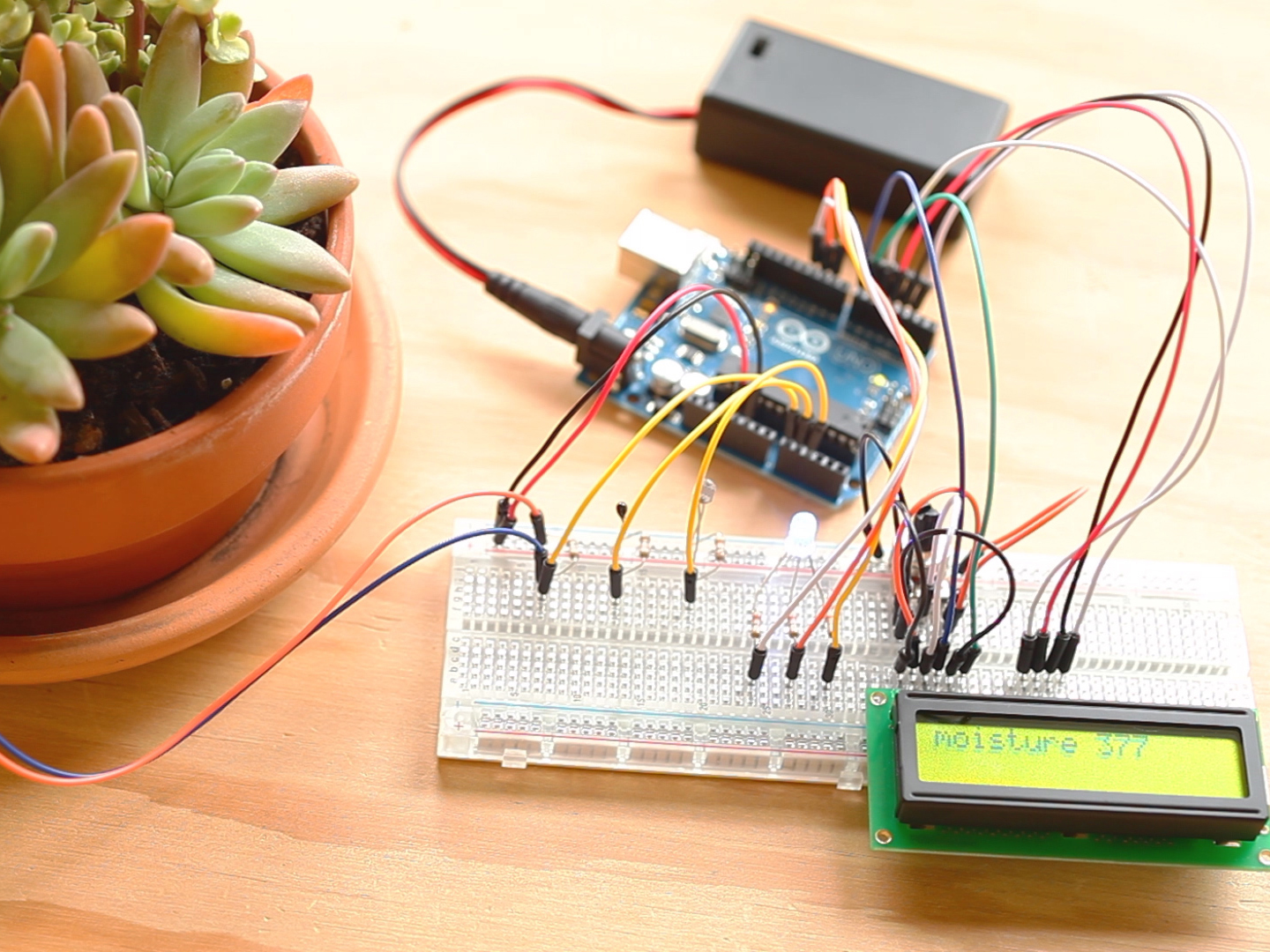Build a digital guardian for your favorite plants! Using an Arduino and a few inexpensive sensors, you can keep your plants extremely happy with the proper amount of moisture, warmth, and light.
The simplest version of Potted Plant Protector senses the brightness of the light, wetness of the soil, and warmth of the air that your plant is exposed to. It outputs these readings over USB, displaying on your computer screen. You’ll start by building this simple monitor, and then move on to intermediate and advanced builds that incorporate LED and LCD displays, learning about Arduino and electronics as we go.
All electronic parts for all three versions are available at Radio Shack in the Make: Ultimate Microcontroller Pack. They can also be purchased separately.


